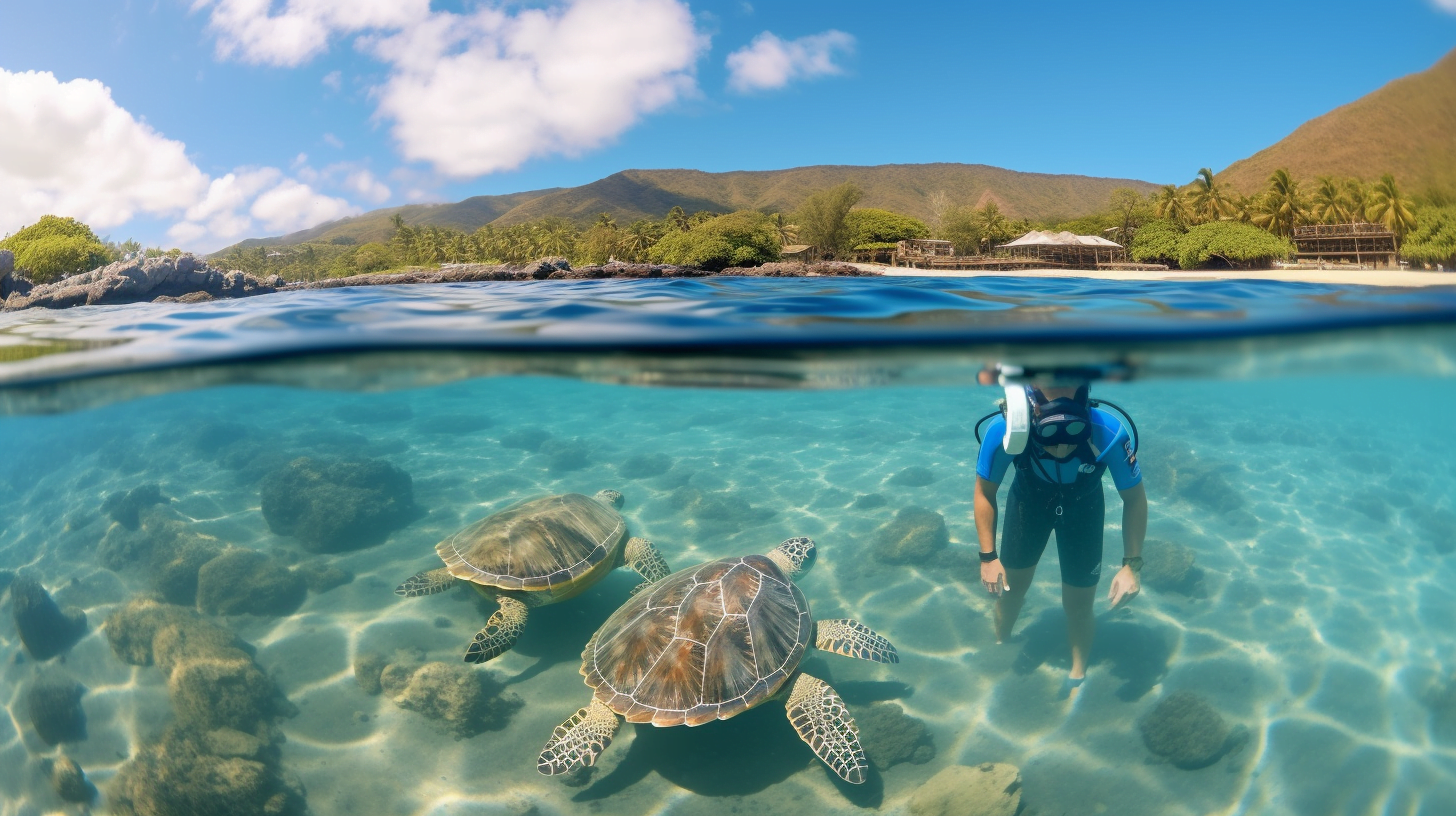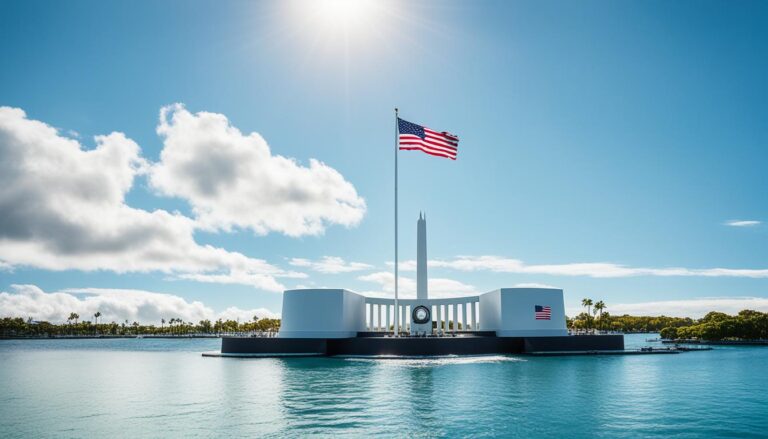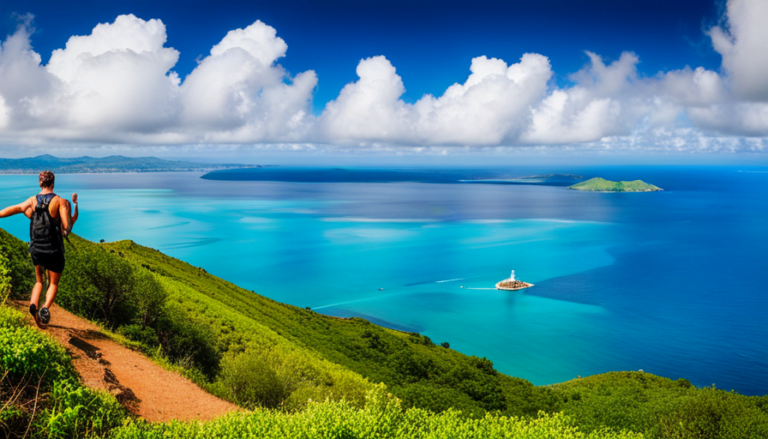Stay Safe and Soak Up the Sun in Oahu 🏖️
As you step onto the beautiful island of Oahu, you’ll be surrounded by picturesque beaches, lush green landscapes, and a vibrant culture. But before you dive into the endless possibilities of adventure and relaxation, it’s crucial to ensure your health and safety. As the saying goes, ‘An ounce of prevention is worth a pound of cure,’and this couldn’t be truer when it comes to exploring this paradise.
With the ongoing COVID-19 pandemic, it’s vital to follow guidelines to protect yourself and others. Along with this, there are other health and safety considerations to keep in mind, such as:
- ocean safety
- sun protection
- staying hydrated
- emergency preparedness
- respecting the local culture.
In this article, we’ll dive into each of these aspects in detail, providing you with the knowledge and resources to have a safe and enjoyable time on the island.
So, let’s get started on your journey towards a memorable and safe experience on Oahu.
Key Takeaways
- Following COVID-19 guidelines is crucial to protect oneself and others, including proof of vaccination or negative COVID-19 test results for certain establishments, social distancing, and wearing face masks in public settings.
- Understanding ocean safety and rip currents is important when swimming, and cooperating with lifeguards is crucial for a safe experience.
- Sun protection is necessary, including using broad-spectrum sunscreen with SPF 30 or higher, wearing sunglasses and hats, and staying hydrated.
- Emergency preparedness is important, and having a plan, first aid kit, and knowledge of evacuation routes is necessary, as well as respecting the local culture and customs when exploring Oahu.
Ocean Safety
When it comes to ocean safety, it’s important to understand the potential dangers of rip currents and how to avoid them.
To ensure safe swimming, make sure to always swim near a lifeguard station and follow their instructions.
Remember, lifeguards are there to keep you safe and it’s important to cooperate with them.
Understanding Rip Currents
To stay safe while swimming at Oahu’s beaches, you should be aware of rip currents and how they can quickly pull you out to sea. Rip currents are strong, narrow channels of water that flow away from the shore and can occur at any beach with breaking waves. They’re typically formed by a combination of wave action, topography, and tidal changes.
It’s important to understand the dangers of rip currents, as they can be deadly. Rip currents can drag even the strongest swimmers out to sea, making it difficult to swim back to shore. If you find yourself caught in a rip current, it’s important to stay calm and not fight against the current.
Instead, swim parallel to the shore until you are out of the current’s pull, then swim back to shore. Remember, rip currents can occur at any time, so always be aware of your surroundings and the conditions of the water before entering.
As you can see, understanding rip currents is crucial to staying safe while swimming at Oahu’s beaches. However, there are other tips and precautions you can take to ensure a safe swimming experience.
Tips for Safe Swimming
Swimming in the beautiful waters of Hawaii can be a refreshing experience, and there are ways to ensure a safe swim. First and foremost, it is important to practice proper swimming etiquette. This includes avoiding diving in shallow waters, not swimming alone, and always being aware of others in the water. Additionally, it is important to wear proper attire, such as a swimsuit or rash guard, to prevent skin irritation or injuries.
To emphasize the importance of proper attire, consider the following table:
| PROPER ATTIRE | IMPROPER ATTIRE |
|---|---|
| Swimsuit or rash guard | Regular clothing |
| Water shoes | Flip flops or sandals |
| Sunscreen | No protection from the sun |
Incorporating these tips into your swimming routine can help ensure a safe and enjoyable experience in the waters of Oahu. Next, it is important to understand the role of lifeguards and their importance in ensuring the safety of swimmers.
Importance of Lifeguards
Lifeguards play a crucial role in ensuring a fun and worry-free swimming experience. They’re trained professionals who are responsible for the safety of swimmers in and around the water.
Here are five reasons why lifeguards are important:
- They’re trained to respond quickly and appropriately in case of an emergency.
- They’re able to identify potential hazards and prevent accidents before they happen.
- They provide first aid and CPR in case of an injury or drowning incident.
- They’re equipped with essential lifeguarding equipment such as rescue tubes, whistles, and first aid kits.
- They enforce rules and regulations, ensuring that all swimmers are following safety guidelines.
In order to become a lifeguard, individuals must undergo rigorous training requirements to ensure that they’re prepared to handle any situation that may arise. It’s important for swimmers to always be aware of the presence of lifeguards and to follow their instructions to ensure a safe and enjoyable experience.
As you dive into the water, remember the vital role that lifeguards play in keeping you and your loved ones safe.
Moving on to the next important topic of sun protection, it’s crucial to take the necessary steps to protect your skin from harmful UV rays.
Sun Protection
Don’t forget to slather on the sunscreen before hitting the beach to protect your skin from harmful UV rays. Sunscreen should be applied at least 30 minutes before going outside, and reapplied every two hours or after swimming or sweating.
Be sure to choose a broad-spectrum sunscreen with an SPF of at least 30 to provide protection against both UVA and UVB rays. Don’t forget to cover all exposed skin, including your face, ears, neck, and any bald spots on your head.
Remember that even on cloudy days, up to 80% of the sun’s harmful UV rays can penetrate your skin, so it’s important to wear sunscreen every day.
In addition to sunscreen, wearing sunglasses can also help protect your eyes from UV radiation. Look for sunglasses that block 100% of both UVA and UVB rays, and choose a pair with large frames that cover your eyes and the surrounding area.
Don’t forget to bring a hat or visor to protect your face from the sun as well. Remember, staying safe in the sun is important for your health, so take the necessary precautions before enjoying your day at the beach.
Now, let’s move on to the next important aspect of staying safe in Oahu – staying hydrated.
Staying Hydrated
To avoid feeling thirsty and dehydrated during your beach day, make sure you bring plenty of water or a sports drink with you. Staying hydrated is crucial when spending time in the sun and heat, and it’s important to drink plenty of fluids throughout the day.
Here are some hydration tips to help you stay hydrated at the beach:
- Drink water or sports drinks before, during, and after your time in the sun.
- Eat water-rich foods like fruits and vegetables.
- Avoid alcohol and caffeine, which can dehydrate you.
It’s also important to recognize the signs of dehydration, such as feeling thirsty, dizzy, or tired. If you experience any of these symptoms, take a break in the shade and drink some water. Remember, staying hydrated is key to having a fun and safe day at the beach.
Moving on to emergency preparedness, it’s important to be prepared for any unexpected situations that may arise during your beach day.
Emergency Preparedness
Make sure you have a plan in case of emergencies – it’s important to have a first aid kit, emergency contacts, and know the location of the nearest medical facility.
You can prepare for emergencies by having an emergency kit at home and in your car. Your emergency kit should include items such as a flashlight, extra batteries, a radio, first aid supplies, non-perishable food, and water.
It’s also important to know your evacuation routes and have a plan in case you need to leave your home quickly.
In addition to having emergency supplies and knowing evacuation routes, it’s important to stay informed about potential natural disasters or other emergencies that may occur in Oahu. Be sure to sign up for emergency alerts and notifications from local authorities.
By being prepared, you can help protect yourself and your family in the event of an emergency.
Now, let’s talk about respecting local culture and customs.
Respecting Local Culture
Respecting local culture involves understanding and embracing the customs and traditions of the community. As a visitor to Oahu, it’s important to be aware of the cultural sensitivity required when interacting with the locals. Here are some ways to show respect for local traditions:
- Learn basic Hawaiian language, including greetings and common phrases.
- Follow dress codes when visiting religious sites or attending cultural events.
- Take off your shoes before entering a home or temple.
- Ask for permission before taking photos of people or their property.
- Respect the ‘aina (land) by not littering and taking care of the environment.
It’s also important to remember that Hawaii isn’t just a tourist destination, but a home for many locals. As visitors, we have the responsibility to be mindful of our actions and how they may affect the local community.
By showing respect and understanding towards the culture and traditions of the people of Oahu, we can create a positive and meaningful experience for everyone.
Frequently Asked Questions
What are the most common illnesses or injuries visitors experience while on Oahu?
When visiting Oahu, common ailments include sunburn, dehydration, and minor injuries. Emergency services can be accessed at local hospitals or urgent care centers. It is important to stay hydrated and protected from the sun.
Are there any restrictions on hiking trails or outdoor activities due to weather conditions?
Before setting out on any hiking trails or outdoor activities, it’s important to check for any current hiking restrictions due to weather conditions. Stay safe by being prepared and aware of any potential hazards.
What is the best way to handle encounters with wildlife, such as sharks or jellyfish, while swimming or snorkeling?
When encountering wildlife while swimming or snorkeling, take preventive measures such as avoiding areas with known shark activity and wearing protective clothing. In case of emergency, quickly exit the water and seek medical attention.
How can visitors best prepare for natural disasters, such as hurricanes or tsunamis, while on Oahu?
Prepare for the unexpected with emergency preparedness. Know evacuation routes and have a disaster kit ready. Stay safe during hurricanes and tsunamis by staying informed and following instructions from local authorities.
What are some cultural norms or customs that visitors should be aware of to show respect for local traditions?
To show respect for local traditions, be aware of cultural etiquettes, such as removing shoes before entering homes or temples, and dressing modestly when visiting religious sites. Avoid wearing beachwear in town or at restaurants.







